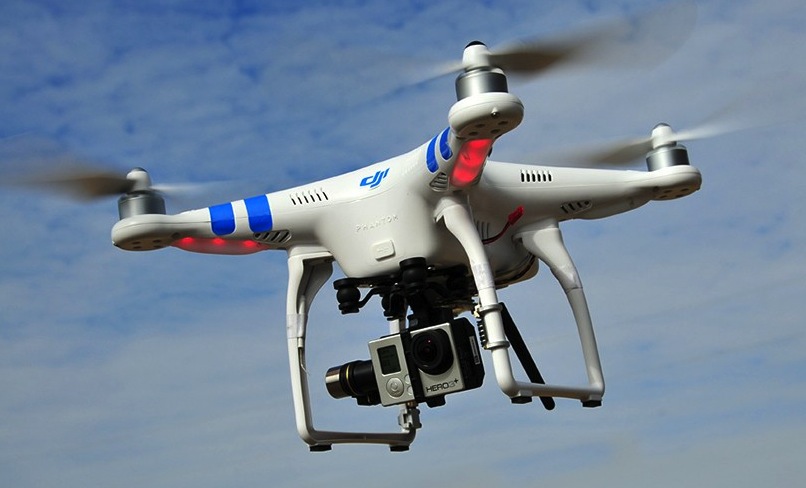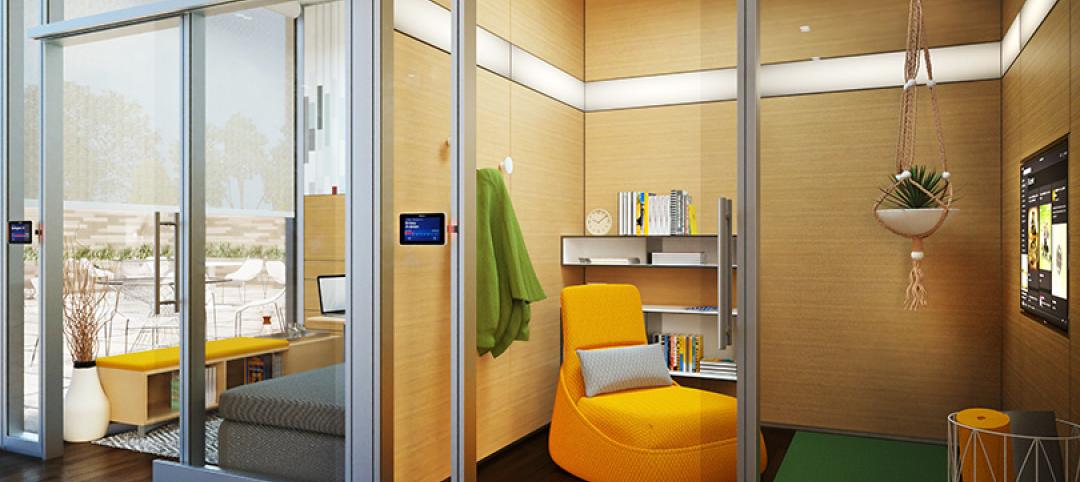As a designer at SRG, I’m used to looking at the world from above, at least the part architects get to design. I often help create site plans using satellite photos; I work with plans that are a top down view of a building; and I enjoy constructing physical models of our projects that allow me to see the building from any angle in its context, mainly from above. I have spent countless hours building digital 3D models, zooming around, not restrained by gravity or objects, and then using the same model to generate renderings, often from a bird’s eye perspective of the site, a building or a detail.
To us designers, looking at things from above is second nature. Orientation, form, circulation, scale, function—these are all things we understand in the “top down” perspective. We have been taught this skill from our first classes in architecture school, and now we look at our designs from this perspective at every stage of the project, except for the actual finished building.
When I first discovered aerial video from UAV’s “Unmanned Aerial Vehicles” or small drones, I was amazed, excited and overwhelmed by the possibilities that it created, especially for the architecture profession. I realized what I have been missing out on; the freedom and ability to view our project from any angle in beautiful sweeping views. Is this really possible? Can I actually fly one?
'It is clear that this new technology will have a huge beneficial impact on the design and construction industry, but when these benefits will be reaped is not as clear.' —Dmitriy Molla, SRG Partnership
I was determined to learn how this new technology works and to reap the many benefits I thought it could bring to architecture. With a little luck and months of practice flying a $40 toy drone in my back yard, I finally purchased a larger UAV capable of filming video and shooting still photos from the air. My research also revealed that there are many more possible applications for our field than I first realized.
The type of drone I’m talking about can go by many names; drone, quad copter, UAV (unmanned aerial vehicle), UAS (unpiloted air system), multirotor. Even experienced drone pilots often have debates about what their drones should be called. My name of choice is a quad copter, or UAV, although I often use “drone” because most people understand this term best. The important thing to understand when talking about these “drones” is that the machine I’m talking about is not a miniature military drone such as the Predator but an upscale toy helicopter.
As I studied more about this technology, I discovered that every stage of a project could benefit from this technology.
Design
Say you are interested in creating a high-rise with amazing views of the city. A drone can capture those exact views from any height and in any direction. It can capture high-resolution photos for a super detailed site plan. Using new photo-mapping software like Pix4D, you can create accurate 3D models of your existing site and the adjacent buildings. This model can then be used to extract contour maps, survey-grade orthomosaics site plans or an accurate 3D model imported into your preferred modeling software that you can use as a base for your concept models, renderings, 3D printing and countless other applications.
Construction
As the construction of your project begins, capturing aerial progress videos and photos is easy, quick and inexpensive. There is no need to higher manned aircraft photographers which takes time, lots of money and has a high carbon footprint. Unlike manned aircrafts, UAVs can capture videos along with photos from any height, angle, in much greater detail and all in a few minutes. UAV’s also are great for inspecting hard to reach places quickly and safely.
Completion + Marketing
Once your project is finished, UAV’s can highlight various features of the building. Aerial photos of the site can explain how your design fits within the larger context. Showing the whole building from different elevated angles can help explain the form and design parti. Aerial photos can highlight sustainable features such as skylights, PV arrays and green roofs.
Also, videos that can go from ground level to aerial views of the building can explain its size, shape, materiality, circulation and give a general introduction to the building. South Puget Sound Community College Building 22, completed in early 2014, is a perfect example of the benefits UAVs can offer when documenting the final building. Its long atrium space with an expansive clearstory and many skylights was difficult to document and explain in exterior ground photography. Using a UAV we were able to highlight these features in day and night time photos and videos. This helps us clearly explain the building parti and highlight the day lighting strategy that was used.
It is clear that this new technology will have a huge beneficial impact on the design and construction industry, but when these benefits will be reaped is not as clear. While the UAV technology is growing and developing at lightning speed its application to our industry has been extremely slow due to the lack of rules, regulations and clarity on how this technology can be used.
Congress has tasked the FAA to develop clear rules and regulations and has even expressed its concern that the US lags other nations in benefiting from the use of this technology. As with every new technological breakthrough, regulations lag behind, yet, I was very excited to see that after years of little progress, the FAA has come out with its “proposed” rules for integration of the UAV’s into the national air space. I’m eagerly looking forward to these developments and to the many other applications that have not yet been discovered for this new technology.
About the Author: After moving from Latvia at the age of eight, Dmitriy Molla grew up in Boston and received his Master of Architecture degree from Wentworth Institute of Technology in 2010. Currently working on the Oregon State Capitol renovation, Molla has also developed a keen interest in visual graphic presentation, creating renderings, diagrams and 3D models for various projects at SRG. More on Molla.
More from Author
SRG Partnership | Jul 29, 2024
Inclusive design for locker rooms: Providing equitable choice and access
SRG designers pose the question: What would it look like if everyone who wanted to use a restroom or locker room could?
SRG Partnership | Mar 6, 2023
Benefitting kids through human-centric high school design
Ingrid Krueger, AIA, LEED AP, shares why empathetic, well-designed spaces are critical in high schools.
SRG Partnership | Aug 10, 2022
Increasing the skilled workforce through career technical education
There is a shortage of skilled workers in the United States, a gap that has only gotten wider with the advent of COVID.
SRG Partnership | Aug 8, 2022
Mass timber and net zero design for higher education and lab buildings
When sourced from sustainably managed forests, the use of wood as a replacement for concrete and steel on larger scale construction projects has myriad economic and environmental benefits that have been thoroughly outlined in everything from academic journals to the pages of Newsweek.
SRG Partnership | Jun 9, 2016
Designing for interdisciplinary communication in university buildings
Bringing people together remains the main objective when designing academic projects. SRG Design Principal Kent Duffy encourages interaction and discovery with a variety of approaches.
SRG Partnership | May 21, 2015
How CLT wood construction affects project cost
SRG Partnership's Emily Dawson shares insights on the installation, availablilty, and cost of cross-laminated timber (CLT) construction, based on the firm's recent project at the Oregon Zoo.
SRG Partnership | Apr 9, 2015
How one team solved a tricky daylighting problem with BIM/VDC tools, iterative design
SRG Partnership's Scott Mooney describes how Grasshopper, Diva, Rhino, and 3D printing were utilized to optimize a daylighting scheme at Oregon State University's new academic building.
SRG Partnership | Feb 9, 2015
The generalist architect vs. the specialist architect
The corporate world today quite often insists on hiring specialists, but the generalists have an intrinsic quality to adapt to new horizons or even cultural shifts in the market, writes SRG Partnership's Gary Harris.
SRG Partnership | Jan 5, 2015
Beyond training: How locker rooms are becoming more like living rooms
Despite having common elements—lockers for personal gear and high-quality sound systems—the real challenge when designing locker rooms is creating a space that reflects the attitude of the team, writes SRG Partnership's Aaron Pleskac.
SRG Partnership | Dec 18, 2014
In response to ultra-open and uber-collaborative office environments
Susan Cain’s bestselling 2012 book, "Quiet: The Power of Introverts in a World That Can’t Stop Talking" has made an impact on how we understand our current workforce, recognizing that at least one-third of the people we work with are introverts, writes SRG Partnership's Susan Gust.















